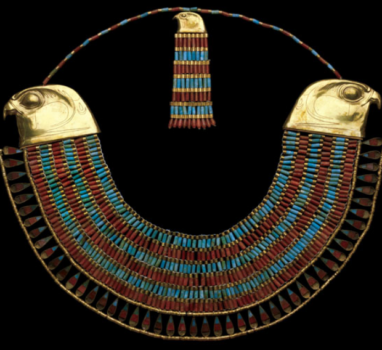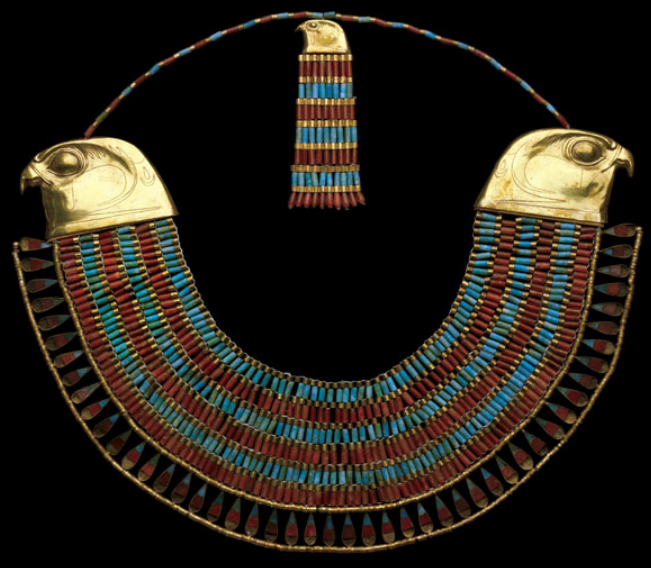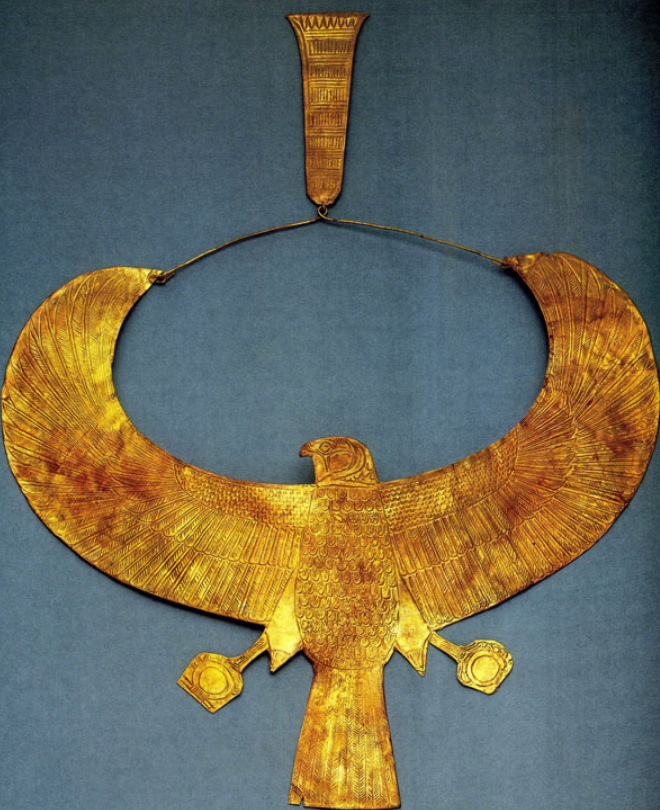Many of the images we see of the ancient Egyptian pharaohs are depicted wearing Wesekh or Usekh collars. The word, wsh, means wide, accurately describing the beautifully crafted board collars. They are often fashioned of beads made of glass, semi-precious gemstones, or gold. A board collar found in King Tut’s tomb consisted of solid gold. (shown below)
The collars were one of the most popular adornments worn by the Egyptians. Numerous examples survive and have been found in tombs. They were believed to hold protective qualities. Although made for burials, they were also worn by those living. This is made evident by the ‘counterweight’ of the pieces.
Because the collars were large, and heavy, they would tend to fall forward as they merely rested on the shoulders and were hooked around the neck. A counterweight hanging in the back helped keep the balance.
These type of collars, because of their popularity during the time of the ancient Egyptian Kingdoms, can be found in most any museum which offers an exhibit on this long ago culture.



